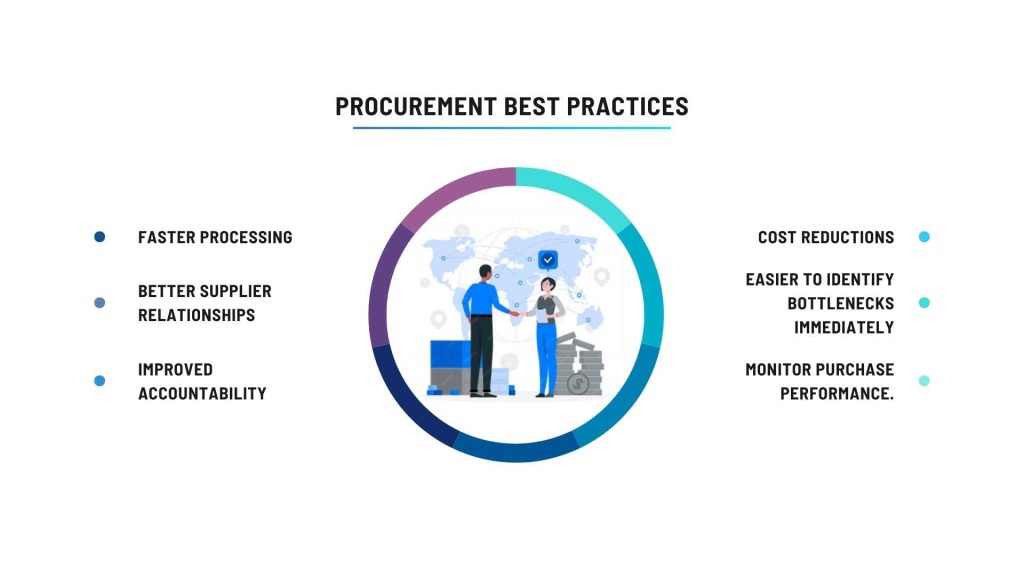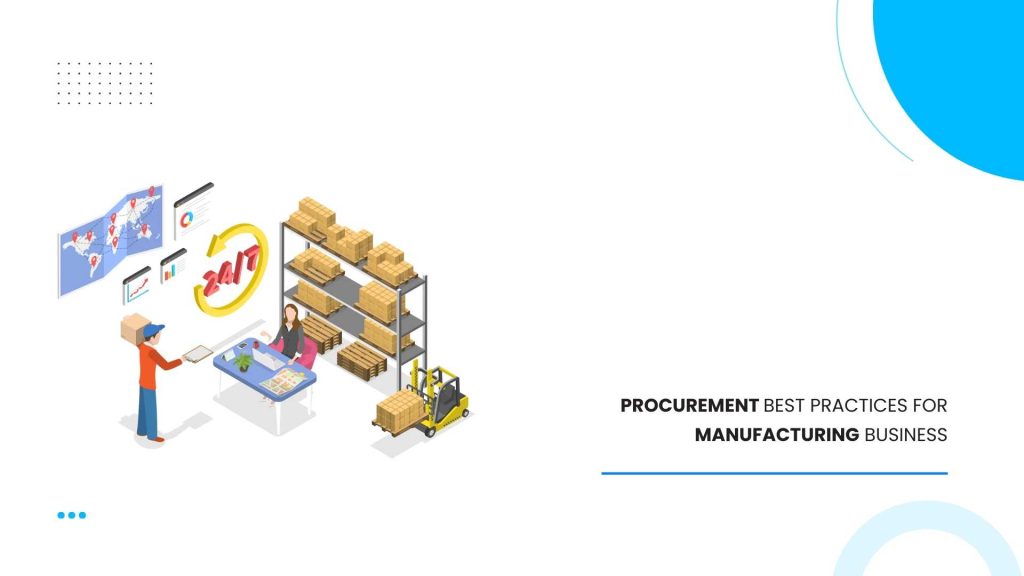Procurement or purchasing costs can make up a significant portion – sometimes up to 60% – of all expenses for manufacturing companies. The market largely influences the cost of materials, leaving manufacturing companies with minimal control. The profitability of a manufacturing company hinges on implementing efficient and effective purchasing strategies. Embracing Best Practices in Purchasing is key to streamlining the procurement process and prioritizing cost-effective purchasing.
What are Purchase Best Practices?
Best purchasing practices entail a series of strategies that assist manufacturing companies in enhancing their procurement procedures to secure timely acquisitions at the most competitive prices.
Adopting best purchasing practices can benefit manufacturing companies significantly. These practices streamline procurement, inform decisions, optimize resources, increase efficiency, lower costs, and improve profitability, leading to a more competitive future for a company.
Best Purchasing practices involve various tasks, such as pre-purchase research and performance monitoring, which are crucial for informed decision-making and continuous improvement. We explore these activities to implement best purchasing practices.

Build Strong Relationships with Suppliers
Building strong supplier relationships through clear communication and transparency fosters trust and long-term partnerships. This results in guaranteed product quality, better pricing, and reliable deliveries.
Centralize Purchasing
Centralizing purchasing for a manufacturing company can lead to benefits like standard procedures, reduced duplicate efforts, increased negotiating power for better deals, and overall cost savings.
Conduct Thorough Research Before Purchasing
The Purchasing Team’s role is crucial in researching suppliers for quality products at competitive prices. They evaluate product quality, prices, delivery schedules, and past performance to ensure reliability and timely deliveries. Your team’s efforts are instrumental in securing the best deals for our company.
Clear Understanding of purchase requirements
The purchasing team should thoroughly understand the necessary materials, sizes, specifications, and more. This knowledge enables the team to seek out suppliers that provide high-quality materials that meet the specified criteria and stay within the budget.
Manage Inventory Effectively
The purchasing team ensures timely material provision for smooth production, avoiding stockouts or overstocking. Effective inventory management practices like setting reorder levels, configuring alerts, and adopting a material management system are crucial. These steps provide real-time inventory data, aid demand planning, and support forecasting.
Tracking and Monitoring Purchase
Implementing tracking and monitoring systems can be challenging, especially for manufacturing companies with complex supply chains. However, ERP software can help overcome these challenges by delivering a centralized platform for all procurement activities. This approach aids in identifying issues and bottlenecks, making relevant adjustments to boost efficiency, and ensuring that the company’s procurement process is always on track.
Monitor Purchase Performance
Key performance indicators (KPIs) help measure a manufacturing company’s purchase performance. Important KPIs include Purchase Order Cycle Time, Average Cost of Processing a Purchase Order, Number of Vendors, On-Time Delivery, Product Quality, Supplier Ratings, Cost Reduction, and Cost Avoidance. Monitoring these metrics allows for performance comparison, identifying areas for improvement, and taking corrective actions.
Implement Purchase Budget
Setting a specific budget for purchases holds the purchasing team accountable. This practice guarantees that companies prioritize their purchases, avoid costly last-minute decisions, manage overall spending, and promote a culture of cost-effective expense management.
Continuously Improve Purchase Processes
Continuous improvement is not just a strategy; it’s a mindset. It’s the key to maintaining a competitive advantage in the market. By interacting with the purchasing team, using feedback to inspire enhancement, and setting KPIs like reducing purchase order cycle time, expanding the supplier network, and cost reduction, we can continuously strive for better procurement processes.
How does ERP Software help Implement Purchase Best Practices
ERP software simplifies purchase best practices for manufacturing companies by providing real-time data, streamlining processes, enabling centralized policies, KPI monitoring, and data-backed decisions for continuous improvement in purchase processes.
conclusion
Acumatica ERP enhances business procurement processes by streamlining workflows, reducing errors, and enabling informed decision-making through centralized data management, automation, and real-time insights. It fosters efficiency, transparency, and collaboration to optimize the supply chain, drive cost savings, and enhance competitiveness in the market.

Vijay comes with a vast experience in ERP and enterprise solutions space with about 20 years of experience in various packaged application like Acumatica, SAP, Orion, Salesforce.com, SugarCRM and, SalesLogix.

